Elizabeth's GG Grandmother and GGG Grandmother were lacemakers in England. They lived in the village in Denton in Northamptonshire. The John C. Campbell Folk School offered a weeklong class in bobbin lace, so she signed up to learn how to make lace as her ancestors had done.
Lace bobbins vary depending on the region where they were used. Continental bobbins have large wooden ends. English Midland bobbins use spangles of beads for weight and to keep the bobbins from rolling on the pillow.
|
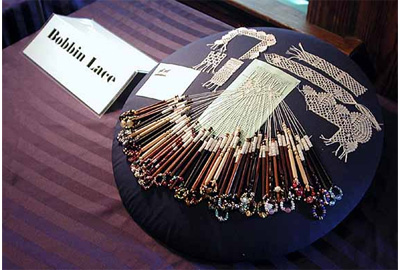
Elizabeth's Bobbin Lace Pillow and English Midland-Style Bobbins at the Folk School Friday display.
|
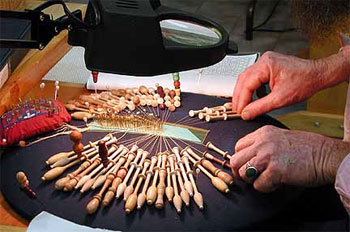
Another student in the John C. Campbell Folk School class uses continental bobbins to create a very detailed delicate lace.
|
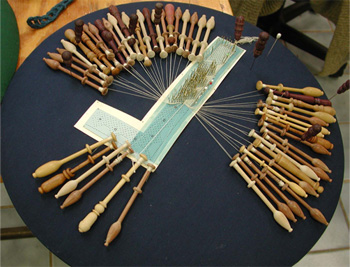
This pillows shows a pricking card for a corner (not to mention a fine collection of continental bobbins). To keep the work in the center of the pillow, most of the pins are removed, the card very carefully lifted and repositioned.
|
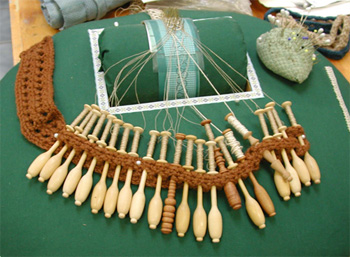
This is a roller pillow. The pricking pattern is wound around the cylinder, thereby eliminating the need to move the entire operation as the lace grows. The bobbins are secure for transport by the crocheted chain.
|
|
Antique Midlands Lace Bobbins
|
. 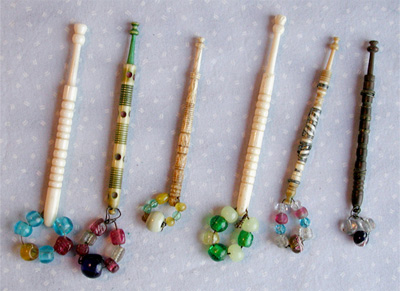 The above images show a collection of Midlands lace bobbins. The far right bobbin shows a wound wire decoration. The second right bobbin shows a pewter decoration.
|
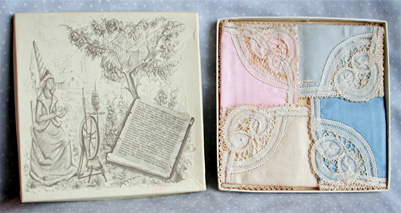
A souvenir box of Belgium linen hankies with Bruges bobbin lace. The box tells the story of a maiden who spun flax day and night to support her family, and how one day after she took a walk and a nap. When she awoke, she noticed a pattern of threads had fallen on her apron. She recreated the pattern from threads cut from her spinning wheel, sold it to a wealthy merchant and became rich selling the lace. Oh yeah, she also married her true love and lived happily ever after.
A closer examination of the drawing on the box lid shows a spinning wheel having neither flyer or spindle, her foot on the wrong side of the treadle and the thread coming off of the drivewheel. The ermine trim on her jacket, and her hat seem to indicate after she was rich, she still spun thread.
|
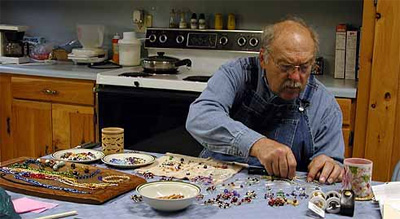
Jim at Work Making Bobbin Spangles
During a visit to Pennsylvania, Jim and Elizabeth stayed at a bed and breakfast while she attended a seminar. While Elizabeth was away, Jim assembled the beads to be attached to the bobbins that you can see in the top picture on this page. Generally seven beads are selected to create each spangle and are chosen both for looks as well as proper size. In addition to purchasing beads at craft stores, necklaces, bracelets, and earrings were purchased in antique stores and flea markets and dissembled to supply a bead source.
|